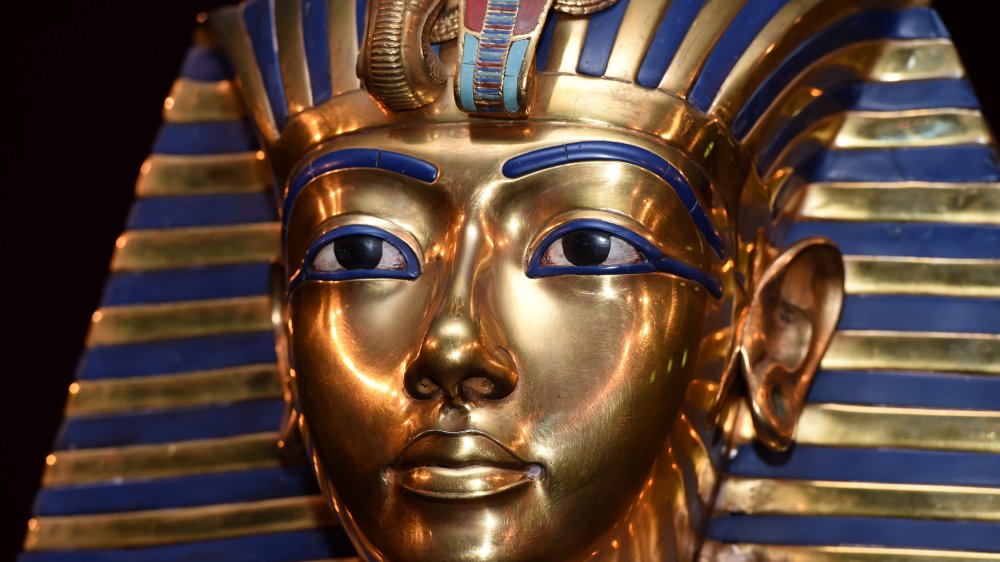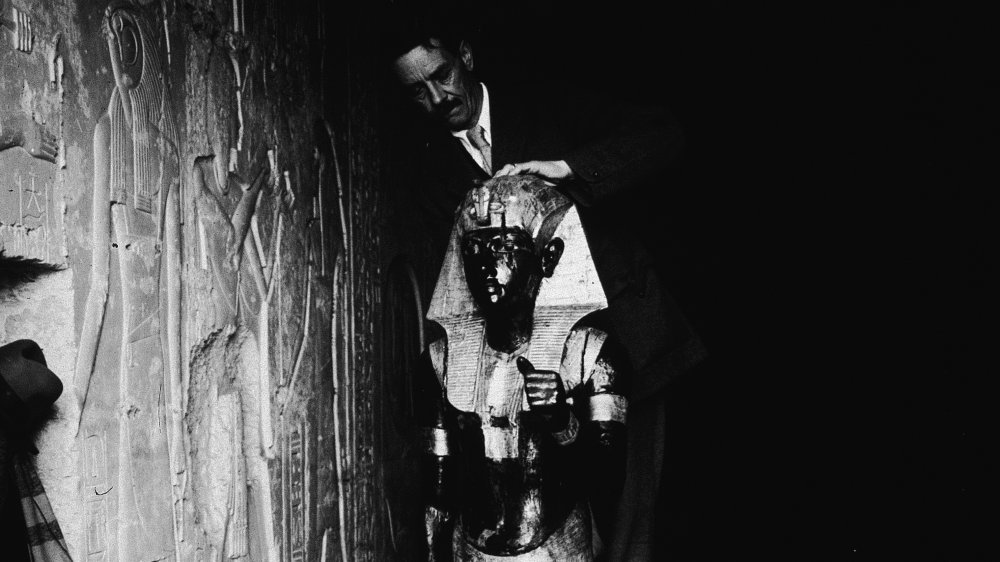Here's What King Tut May Have Eaten When He Was Alive
People find all sorts of things when they start looking inside pyramids, including other pyramids, secret tunnels, and ancient graffiti. They also find slightly less exotic, but no less fascinating, reminders of the past: food. According to National Geographic, the tombs of Ancient Egyptian pharaohs typically were stocked with "everything they might need or want in the afterlife" — and that included preserved food. In an age before freezers or even freeze-drying, items like meat and poultry were kept edible and ready for afterlife snack attacks by mummification, utilizing salt to first dry out the food, bandaging it, and then coating the resulting bundle with resins. The process was not unlike the one used to mummify the bodies of the dead; in fact, Egyptologist Salima Ikram refers to the preserved food found in tombs as "victual mummies," which you should absolutely name your next band.
The "rich and powerful" had access to a resin made from "the sap from a tree related to the pistachio," discovered as a preservative for beef ribs found in the tomb of King Tutankhamun's great-grandparents. In addition to the ribs, scientists found a complete and elaborate feast in the royal couple's tomb, including "17 wooden boxes of food, each carved into the shape of what it contained — a leg of veal wrapped in linen, for instance, as well as a shoulder of antelope, three geese, two ducks, and small birds that may have been pigeons."
Victual mummies for eternal snacking
Tut himself was buried with an impressive deli selection, including 100 baskets containing wheat and barley, bread loaves, sycamore figs, dates, melons, and grapes. Also ready and waiting were honey, jars of wine, and four dozen boxes of victual mummies, including "many cuts of beef on the bone, nine ducks, four geese and various small birds." None of the boxes contained fish, despite, or perhaps because of, the fact that it was a common and plentiful food in Tut's time. "Fish are nice, but you don't get them on the offering list because they're not the best food," explained Ikram, noting that pork and mutton were also absent from the eternal picnic; they were "part of the normal diet, but apparently no one could imagine craving them for the rest of time."
According to BBC Dorset, "no recipes from Tutankhamun's time survive," but we can make educated guesses about the cuisine of Ancient Egypt based on pictures found on their walls, as well as the ingredients available in those days. Museum curator Jackie Ridley used this information to recreate ancient Egyptian recipes in her book Tutankhamun's Cook Book. The staple diet relied on "bread, vegetables, fowl and even beer" with richer people, such as pharoahs, enjoying "port, mutton or wine." Ridley says that "Tutankhamun himself would have eaten animals he'd hunted himself, such as ox." Ridley also notes that pomegranate was a common flavoring ingredient that remains popular in modern Middle Eastern cooking today.

